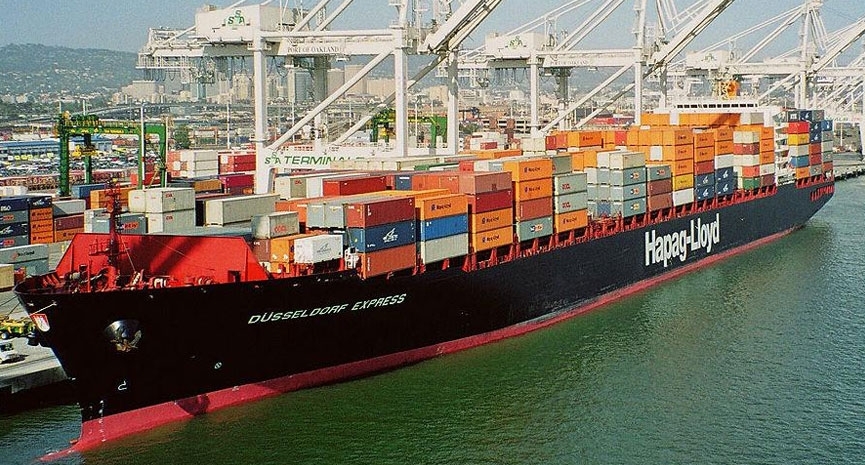Hapag-Lloyd to start two services from India to Europe, Africa in October
Growing demand in the container shipping market has prompted liner shipping company Hapag-Lloyd to launch two new services - the South East India - Europe Express (IEX) and the Middle East-India-Africa Express (MIAX).

September 28, 2019: Growing demand in the container shipping market has prompted liner shipping company Hapag-Lloyd to launch two new services - the South East India - Europe Express (IEX) and the Middle East-India-Africa Express (MIAX). Both the services will be operational from October 2019, closely connecting India to North Europe and Africa.
Making the announcement at an event in Mumbai on Friday, Lars Sorenson, managing director of Hapag-Lloyd's Region India said, "I can assure you that there are not many shipping lines that launch two new services in the same month, in the same country. Hapag-Lloyd is doing that in October. IEX is the first and only direct service from east and south India to Europe. MIAX offers the fastest transit times in the market between India, and Ghana and Nigeria. We also believe there's need to improve connectivity toward Bangladesh which currently is quite challenging. A part of that from Europe and West Africa, we will still be able to connect to other markets like Latin America and North America through transhipments."
The IEX will provide the only direct connection between south and east India and Europe in the market. The weekly service, jointly operated with ONE, YML and COSCO, will be made up of nine 6,500 TEU vessels, with Hapag-Lloyd contributing four ships. The first departures are scheduled for October 26.
The MIAX, launching on October 12, will on the other hand support the growing demand of transport capacity between India and Africa. Hapag-Lloyd will operate MIAX jointly with ONE. A total of nine vessels with a capacity of 2,800 TEU each, will serve on this new route, five of which will be provided by Hapag-Lloyd.
"We believe in serving the needs of all Indian customers. To do that, a comprehensive service coverage is essential and the IEX and MIAX will be an optimal addition to our existing service portfolio," said Dheeraj Bhatia, senior managing director of Hapag-Lloyd's Region Middle East.
Inspiring confidence in growth of shipping in India, Bhatia said the east coast would eventually take over the west coast. "There is a lot of growth on the east or east central and northeast coast of India, which will overtake the growth on the west coast. Traditionally India has been either north or west coast-centric. For the past 5-10 years and the coming years, the governments of states that are focussing on instaalling new manufacturing hubs or factories on the east coast. We see that developing faster. Of course we do not see a slowdown on the west coast, but that's how we also need to make a judgement on where to put our next investments," said Bhatia, adding that there is no other economic direction for India than to rise up.
Also present at the event was Rizwan Soomar, CEO and managing director, DP-World Indian sub-continent, one of the leading terminal providers in the country. "India is a huge market for us. India being a strategic market, we have invested quite a bit in the last one-and-a-half years. I see Hapag-Lloyd doing the same. We believe the exim market and domestic trade will actually pick up. Our customers are doing both exim supply chains, as well as domestic supply chains. DP World and Hapag-Lloyd complement each other in many ways," said Soomar.
"We are extremely pleased to be chosen by Hapag-Lloyd yet again as it reinforces their confidence in our capabilities to add value to trade. We will work closely with Hapag-Lloyd to ensure that customers benefit from our multi modal logistics capabilities in the country to effectively manage their supply chains," he added.
Speaking on the sidelines of the launch, Bhatia said Hapag-Lloyd is ready to meet the January 2020 deadline for International Maritime Organisation's sulphur cap.
"We are ready. We have already informed our customers as to how the new fuel recovery will work. The concern is 1) where does the fuel come from, and 2) what do we do with our ships. I can tell you that almost 90-95 percent of the ships of the world will still operate with the old engines and technology which will then have to use better quality, low sulphur fuel. There are now technologies available like LNG [liquefied natural gas] or converting or installing a scrubber on the ship that can clean the fuel. The industry has just started installing these scrubbers and we believe this will take time and a lot of investment. Our first option is to purchase the low sulphur fuel, we are ready. We are already running a very detailed programme on over 250 ships that we run, that will now start converting and cleaning their tanks for the new fuel from November. As far as the recovery goes, our customers have been well-informed. They have accepted a floating bunker surcharge. It's a well-known matter now across the world and we are pretty confident that whatever the cost that comes up, we are able to pass it to our customers."
Hapag-Lloyd has a fleet of 237 modern container ships and a total transport capacity of 1.7 million TEU.


